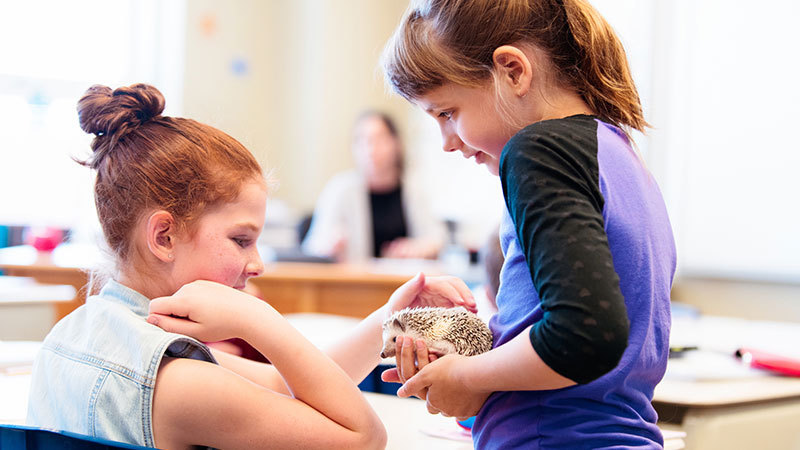Social facilitation is an integral part of creating a strong classroom community for any teacher. Throughout my five years in the classroom, I have learned that developing strong relationships with and facilitating relationships among my students is fundamental, and it’s something I work to cultivate all year long. Before students can become invested in learning, it is critical for them to feel connected and like a member of a vibrant classroom community.
There are many ways to bring social facilitation into your classroom, but I would like to share with you five strategies I use in my classroom that have been very impactful.
1. Group Seating
This is something I have done since my first year of teaching. In my classroom, all my students start out as a member of a group. The groups change each year depending upon the class size, but I typically have six to seven groups of students. Each group ranges in size from four to six students. As a teacher, I try to create groups with a range of talents and personality types – an artistic student who loves to create, an outgoing public speaker, and a student who takes the lead to guide their team. This isn’t always easy. In fact, it’s quite the challenge at the beginning of the school year. It takes me a great deal of time to learn each student’s personality, talents, and strengths. But once my groups are established, our classroom community thrives, and these groups become a strong part of the social facilitation that connects students.
2. Team Building Challenges
It is important to provide your students with opportunities to grow as a team. Even in my science classroom, I work on team building, and I feel this helps guide each group to work more effectively as a team. At the beginning of the school year, I have my students work in teams to create an egg drop. They have to collaborate, work through disagreements, learn to compromise with one another, and improve their communication skills. What I love about these challenges is they teach students important skills that are vital for any profession and apply to all life outside of school. Even better, they get to know one another in the process. These types of challenges place the focus on the task at hand, and simultaneously, students are forming bonds in the process.
3. Going for the Gold
I love watching the Olympics and being able to bring qualities like sportsmanship, healthy competition, and camaraderie into my classroom. I hung country flags above each of my group tables and explained that my students were now competing as countries in the “Going for the Gold” competition. Students could earn points as individuals or as a group, and I kept track of their progress on a scoreboard. Students were so excited and as the semester progressed, I started seeing students encouraging and motivating one another at their country. Students referred to themselves by their country name and it build strong bonds at each group table. Regardless of whether you want to bring the spirit of the Olympics into your classroom, find something that bonds your students to a group and fosters a spirit of teamwork in your classroom.
4. Classroom Pets
In life science, I teach about ecology, the animal kingdom, ecosystems, and biomes, so I knew a class pet would be a natural fit. I started by adding an aquarium, and on the first day, my students rushed over to see the fish. Their excitement was more than I had ever anticipated. Each day, they would bust through the door, wanting to see how the fish were doing. I later added a red-eared slider turtle, a Holland Lop rabbit, and a guinea pig. While classroom pets aren’t for everyone, they can be a game changer for social facilitation. They can help students who struggle socially or emotionally, and they teach about unconditional love and responsibility. Classroom pets are a commitment and something you should thoughtfully consider before bringing one into your classroom.
5. I Wish My Teacher Knew
In Kyle Schwartz’s book “I Wish My Teacher Knew,” she describes an activity where she asked her students to anonymously share something they wish their teacher knew. She wanted to know what would help her better understand each student. After reading the book, I was inspired to try this activity in my class and was blown away by the honesty and vulnerability of my students. I learned about hardships, challenges, fears, and things going on outside of my classroom. I kept this activity in mind throughout the year to be more understanding as their teacher. If you have not tried this before, I encourage you to read Schwartz’s book and see the difference it makes in your classroom.






